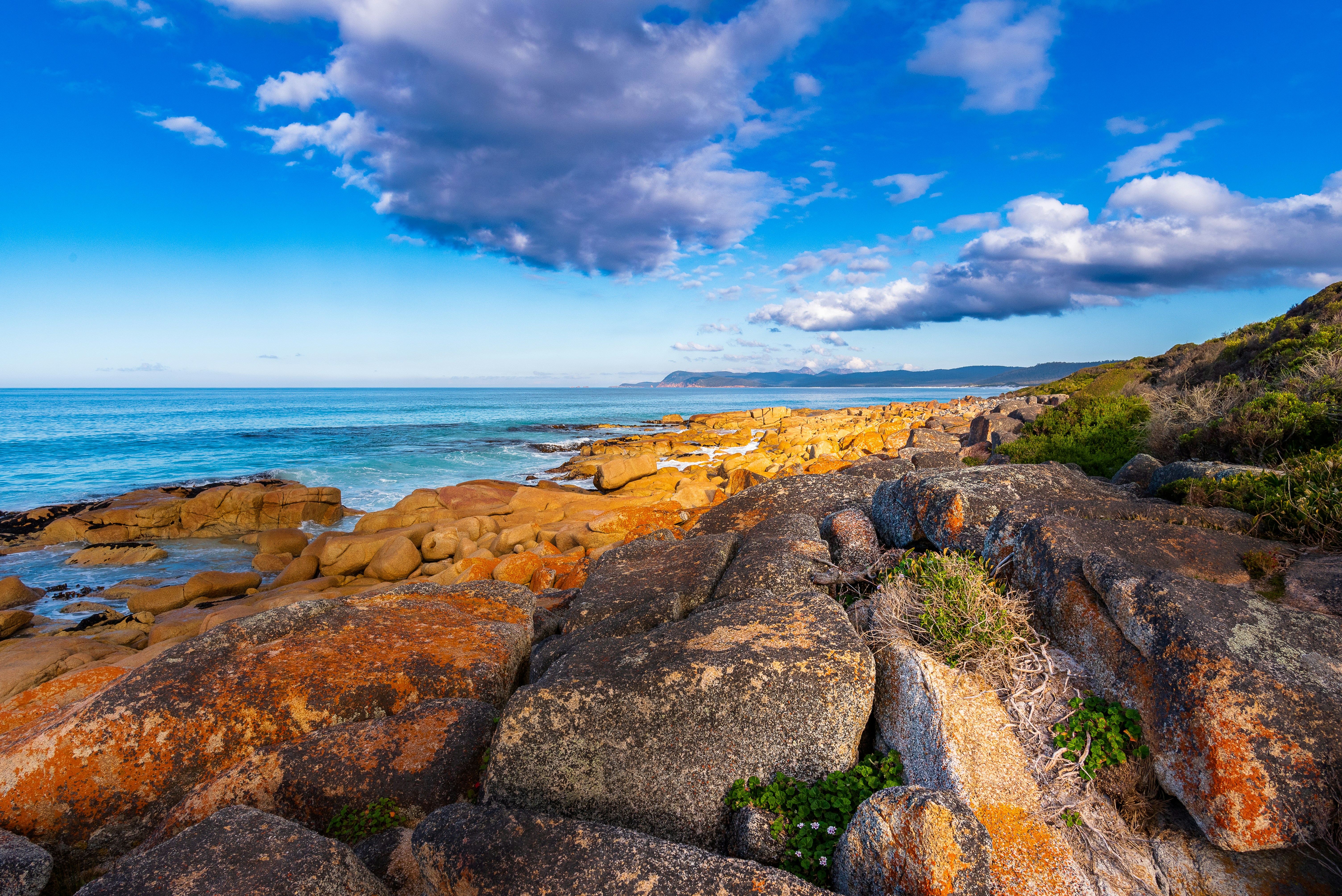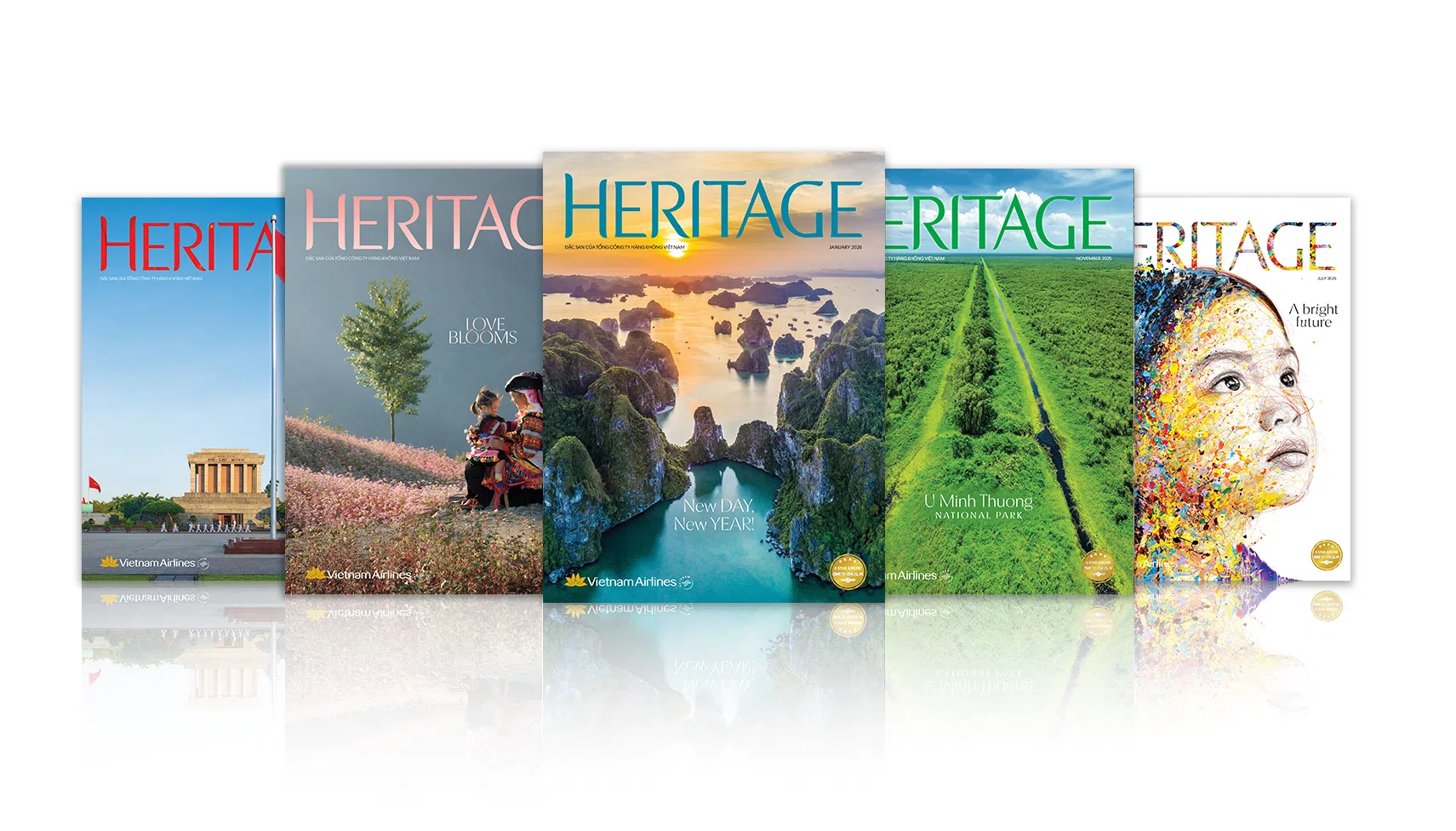Story MY DUNG
Photos MY DUNG, UNSPLASH
A visit to Tasmania offers stunning natural beauty and the world’s cleanest air.
Tasmania is Australia’s largest island, covering an area of 68,401 km2, including the main island and over 300 smaller islands. It is 240 km south of the Australian mainland and remains one of the more remote destinations in an already distant corner of the world. From Vietnam, there are no direct flights to Tasmania – the journey there requires a connection in Melbourne or Sydney.

But a visit to this heart-shaped green island is well worth the effort, I quickly discovered.
One of Tasmania’s greatest points of pride is its air quality, rated cleanest in the world as monitored by the Cape Grim Baseline Air Pollution Station. Thanks to the influence of the westerlies blowing across the Southern Ocean, the air is purified while travelling thousands of kilometers over the sea before reaching the island.
Some local companies have even collected, stored, and bottled this pristine air to deliver anywhere in the world. From my own experience, being in Tasmania for just a few days does wonders for your health and spirit in a world facing environmental pollution.
On my trip, I was lucky enough to stay with a friend who settled in Tasmania. She and her family have a house on a hill, and every morning, looking out from the living room balcony, we saw wallabies leisurely foraging. She also bought me some of the season’s first cherries, which were fresh, sweet, crisp and almost indescribably delicious. It’s no coincidence that Tasmania’s cherries have been dubbed the “Hermès of the fruit world.” Tasmania is also renowned for having some of the best seafood in Australia, especially oysters, abalone and crab. A lavish meal at a restaurant near the harbor bridge in downtown Hobart is a must. Mures is an excellent choice if you are looking for a reliable place. Or take a road trip and enjoy the culinary delights of the island along its romantic coastline.

Tasmania’s most impressive fact may be that 42% of its land area is conserved, including National Parks and World Heritage Sites (about 20%). The Tasmanian Wilderness World Heritage Area (TWWHA) was recognized by UNESCO in 1982 and is one of only two places in the world that meet seven out of the 10 criteria set by the organization. Tassie has 19 National Parks with a rich ecosystem and a variety of flora and fauna unique to the island. Among them, the Tasmanian Devil is a rare species under special protection due to the risk of extinction. The devils are the largest carnivorous marsupials in the world and only live on the island of Tasmania, with an estimated population of about 25,000 individuals.
Due to my limited time, I only visited two of Tassie’s National Parks: Maria Island and Freycinet National Park. I dedicated a whole day to exploring each place; however, to cover every nook and cranny of these parks would require 2 to 3 days each.
Maria Island is famous for its majestic Painted Cliffs and diverse wildlife. The Painted Cliffs left me in awe with their patterned rocks and swirling formations in shades of red, orange, yellow, brown and beige. Over thousands of years, minerals from seawater have seeped into the sandstone, and the effects of iron oxide, waves, and wind erosion have “painted” and shaped the cliffs. This island’s creatures include the adorable and people-friendly wombats. You’ll also encounter numerous wallabies, pademelons, Cape Barren geese and playful platypuses swimming around.
After walking for 10 hours on the island, I didn’t see a single piece of litter. I still remember stopping for lunch at the community house and asking a local woman where the trash bin was. She replied, “In your pocket.” We both laughed, and I tucked my snack wrappers and used napkins into my backpack to take away with me. From that conversation, I learned that whatever you bring you must take back, leaving nothing behind on the island.

Freycinet offers an entirely different experience. This national park is most famous for its stunning Wineglass Bay, curved white sand beach and crystal-clear blue waters. I hiked to the highest point (Wineglass Bay lookout) to take in the breathtaking view of the entire bay. Then I walked for about an hour to get down to the beach. On summer days, when the temperature reaches 25-28 degrees Celsius, you can swim comfortably without worrying about the cold.
Besides Wineglass, Freycinet on the east coast of Tasmania also boasts several smaller but uniquely attractive bays. One of these is Honeymoon Bay, a place of absolute tranquility where the water is crystal clear and gentle waves barely ripple the surface.
My time was running short, but there was much more of Tasmania I wanted to see. Another visit might include the Richmond Bridge, the oldest stone bridge in Australia, or the historic Port Arthur, which preserves the stories of the island’s British convicts. Having been voted the most beautiful island in Australia, New Zealand and the South Pacific region by Travel and Leisure magazine, Tasmania has an abundance of stories and sights in store.










